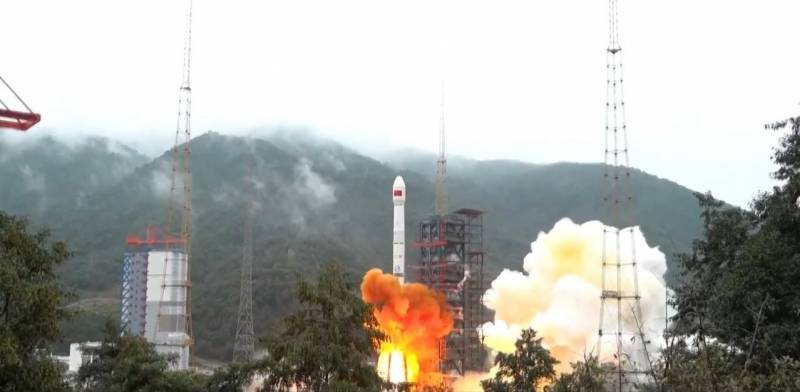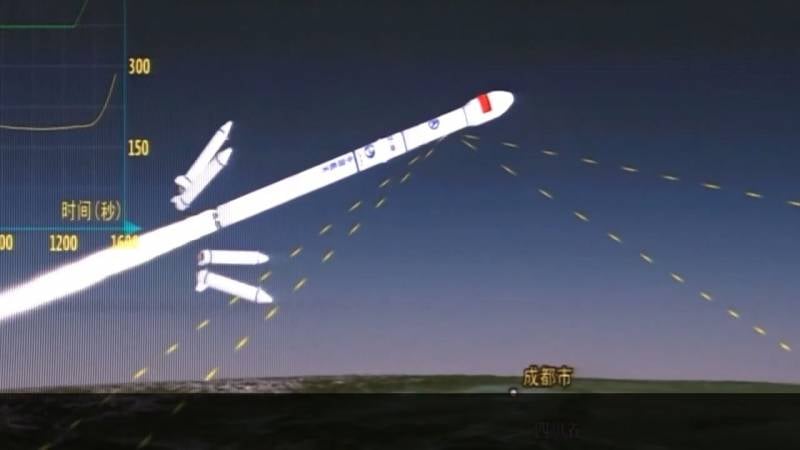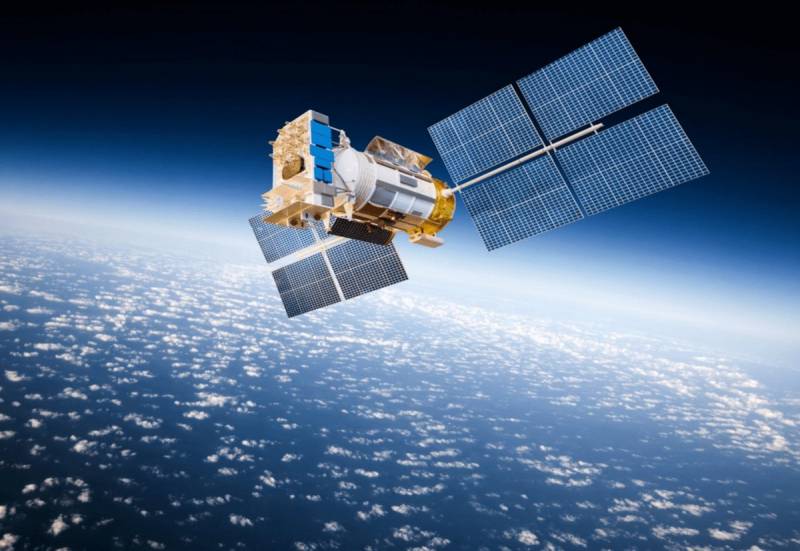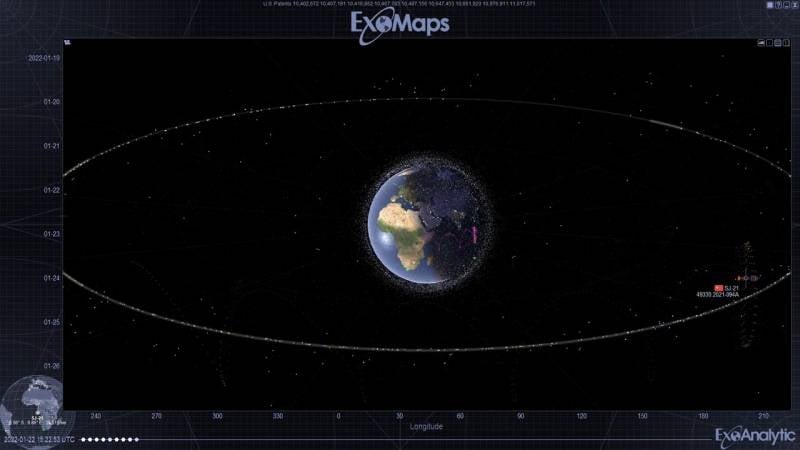Inspector and tug. Experimental spacecraft "Shijian-21" (China)
Last year, the PRC launched the Shijian-21 (Shijian-21 or SJ-21) experimental spacecraft into orbit, designed for various research and testing. Later it turned out that the satellite is capable of maneuvering and interacting with other objects. The tests carried out naturally attracted attention, and also became a cause for concern.
Another launch
On October 24, 2021, in the morning local time, the next launch of the Long March-3B launch vehicle took place at the Xichang Cosmodrome. The new experimental spacecraft Shijian-21 was present as a payload on the rocket. All stages of the rocket and the upper stage worked normally, and at the estimated time the spacecraft was in a given orbit.
The official announcement of the launch said that the main task of the SJ-21 is to conduct various studies and experiments. In particular, it is planned to test new technologies for combating space debris. At the same time, no details of the plans and the test program were given. The main part of the technical features of the spacecraft and its characteristics also remained unknown.
The lack of any information about the capabilities and tasks of the satellite naturally led to the emergence of various versions and suspicions. So, there were versions about the launch by China of another military satellite with unknown potential, threatening foreign space groups. Naturally, such versions were left without official commentary.
Inspector Functions
Just days after launch, in early November, the US Space Force reported that the Shijian-21 had begun testing and began its first mission. During this event, he showed his capabilities in the inspector satellite mode.
An object reportedly separated from the satellite on November 1. According to Space Force, this was the upper stage that delivered the SJ-21 to its intended orbit. Other organizations suggested that Shijian-21 had separated from the upper stage by that time, and then dropped a "mini-satellite" of unclear purpose.
Some time after the separation, SJ-21 began to change orbit and performed a rendezvous with the dropped object. The joint flight of the two products continued until December 26, when the inspector satellite again performed the maneuver and switched to another orbit. What happened for almost two months is unknown. With equal probability, one can assume both a joint flight and some manipulations.
space tug
In the last days of January, a new operation involving the Chinese spacecraft was announced by Exoanalytic Solutions, which monitors the situation in space using a network of telescopes. According to her, on January 22, Shijian-21 moved into a new orbit and headed for the inoperative Compass-G2 satellite from the Beidou navigation system.
Having completed the necessary maneuvers, the SJ-21 entered geostationary orbit, rendezvoused with the navigation satellite and docked. According to other sources, the target was literally caught in a shot net. Then the experimental apparatus took on the role of a space tug and sent the non-working product into the burial orbit.
According to foreign data, Compass is now in an elliptical orbit with an altitude of 36 to 076 km. This fact attracted the attention of experts, because. for such purposes, circular disposal orbits are commonly used. Why the Chinese scientists chose the elliptical is unknown. Perhaps there was some mistake.
New Technologies
China has not previously announced the development of inspector satellites or space tugs. Foreign organizations and the media also did not have reliable information about work in these areas. Now it turns out that both of these concepts have been put to the test. Moreover, two promising features are implemented in one spacecraft, and it is already applying them in space.
The fact that the full list of the functions of the Shijian-21 satellite is unknown is noteworthy and causes concern for foreign specialists. So, behind the function of the inspector and the possibility of maneuvering, additional features may be hidden.
Apparently, after approaching the satellite can, at least, observe and study the intended object. In addition, it carries devices for capture or docking with other vehicles, and also has engines with sufficient characteristics with which it can transfer them to new orbits.
There are concerns about the presence on board the satellite of some additional means with which it can influence other objects. These can be means of optical or electronic suppression, or even some kind of destruction systems. However, such capabilities of the SJ-21 are not demonstrated and are not confirmed in any way.
Dual purpose satellite
The well-known functions of the Shijian-21 apparatus can be useful both for civilian and scientific structures, and for the armed forces of the PRC. A minimum of official information indirectly indicates the military purpose of the satellite. As a result, it makes sense to consider this product in the context of a hypothetical combat use.
A maneuvering inspector satellite can be a convenient and effective reconnaissance tool. Moving in orbits, the SJ-21 will be able to study the military and civilian spacecraft of a potential enemy and collect the maximum amount of information available. For obvious reasons, such a means of intelligence is in every way superior to other control systems.
In the presence of unnamed combat capabilities, Shijian-21 will be able to suppress the optical or radio equipment of the target satellite, interfering with its work. It is also impossible to rule out the fundamental possibility of disabling individual units or the enemy apparatus as a whole by one or another impact.
However, in certain operations, the SJ-21 satellite does not need to damage or destroy the target vehicle. He is able to dock to his target and tow it to another orbit. Changing the trajectory and position in space will also disrupt the operation of the satellite, as well as harm the ground structures that use its support.
As recent events have shown, Shijian-21 is able to reach the geostationary orbit and remove the spacecraft of the navigation system from it. These tests can be seen as a kind of signal for a potential adversary. The PRC shows that it can fight even hard-to-reach satellites in high orbits and disrupt the work of groups that are critical to the enemy army.
It is highly likely that the current SJ-21 satellite will not be the only one of its kind. The Chinese rocket and space industry can build and put into orbit new vehicles of the same type; other promising samples of a similar purpose will also be developed. Accordingly, China has the opportunity to form a whole group of dual-use inspector tugs and keep it on alert.
It should be recalled that other types of anti-space weapons were also created earlier in China. So, at the end of the XNUMXs, an anti-satellite missile capable of hitting targets in low orbits was developed. Foreign sources mention the development of optical and electronic means designed to suppress satellites. Now they are joined by a special spacecraft.
In a narrow circle
The Chinese experimental satellite Shijian-21 has been in orbit for several months and solves real problems. Two operations have already been carried out using the main functions of the device, and it can be expected that in the near future there will be more reports of certain activities in orbit. At the same time, the observed situation is not yet replete with details and leaves a lot of questions. All the real capabilities and potential of the satellite, as well as plans for its further operation and creation of a constellation, are unknown.
But news recent months show that the PRC, without announcement or warning, has entered a narrow circle of countries with inspector satellites. So far, only Russia and the United States had such equipment - and was actively used in covert operations. It can be assumed that China will continue to develop this direction, as a result of which it will reduce the existing backlog or even offer fundamentally new ideas. How this will affect the situation in space, time will tell.




Information